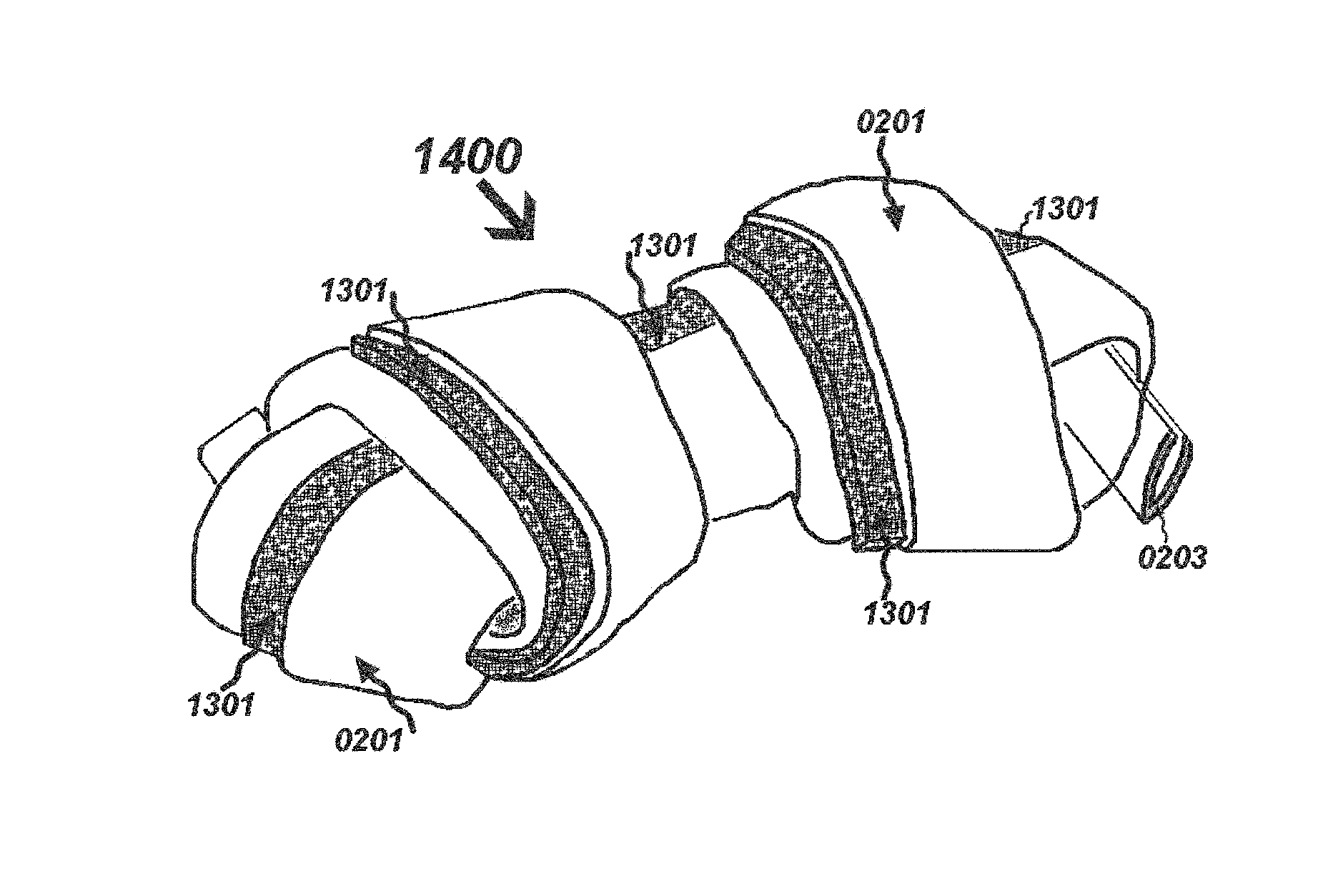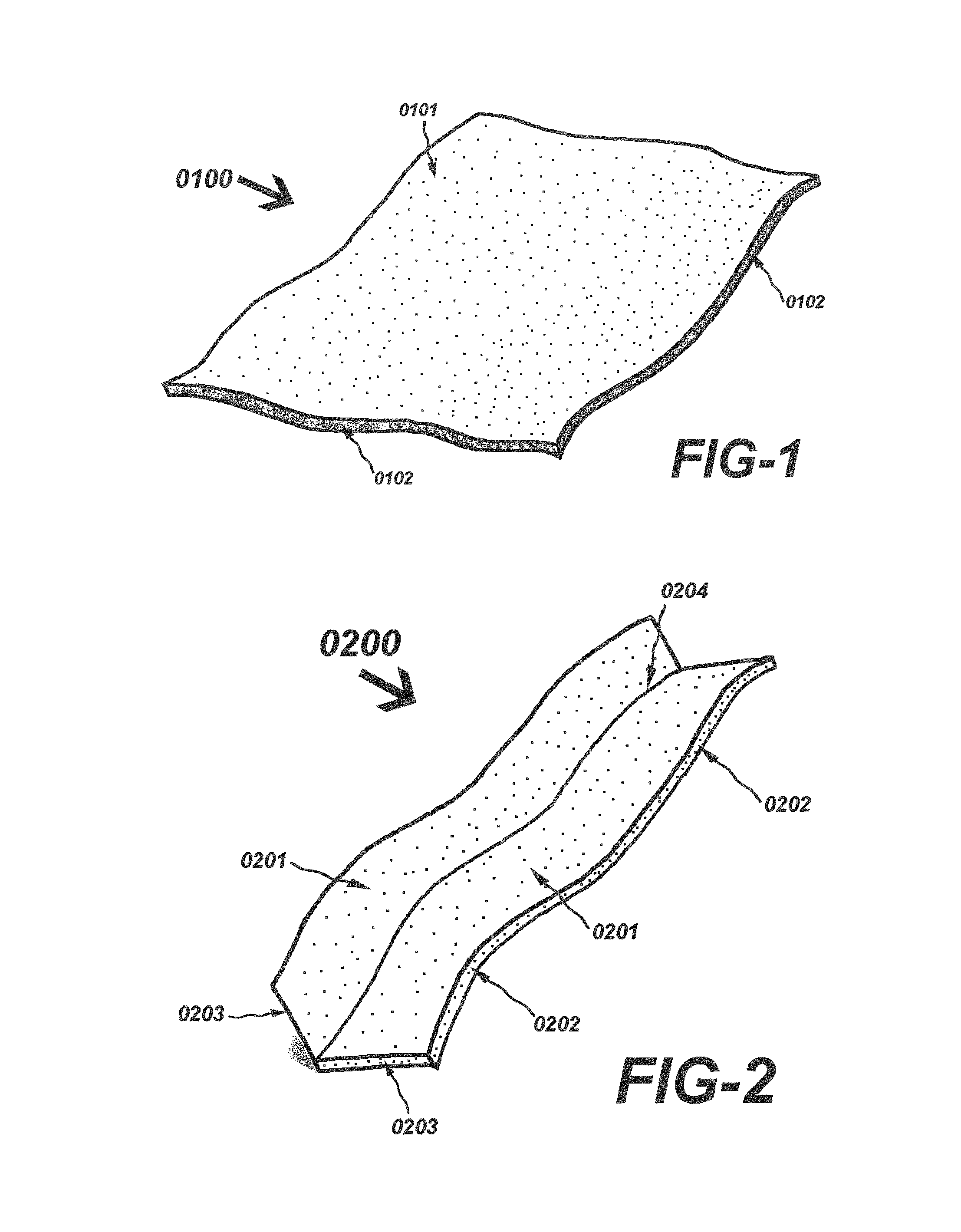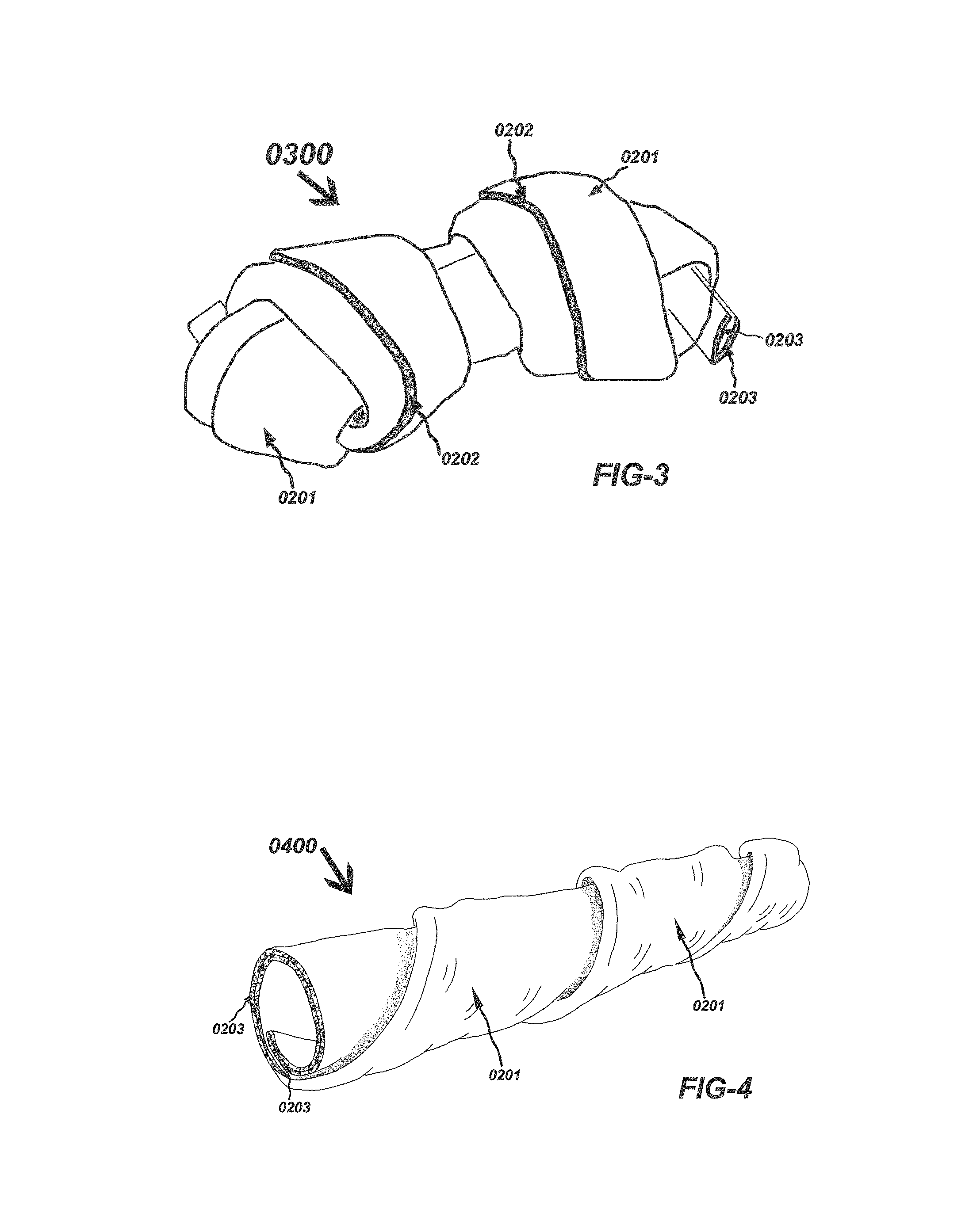However, many dogs find these pet chews lack of substantial
flavor and scent.
Accordingly, many dogs lose interest with these rawhide pet chews after a while and will at most only chew on them for short periods of time.
Some existing products consisting solely of rawhide / porkhide are improved by adding additional flavorings, for example artificial peanut
flavor, into the rawhide after it is hardened, but it cannot improve the
palatability of rawhide significantly.
But since it still has a big member of rawhide / porkhide in the finished products as outer layer, it unfortunately is not thought to overcome the other two disadvantages that rawhide / porkhide have as described below.
Producing the
raw material of rawhide is known to use a bunch of chemicals and therefore generate evident
pollution during its splitting, cleaning, washing and bleaching processes.
The water
system may also be harmed and polluted accordingly.
Secondly, detrimental residues in rawhide from primary
processing.
These chemicals are not good for pets' health.
For example, excessive H2O2 will cause pets vomit or even worse symptom.
What's more,
heavy metals, for example lead may also remain in the rawhide and accumulate in the body, which cause serious damage to the pets' health.
The U.S. Pat. No. 5,673,653 has another
disadvantage regarding the member of “traditional jerky” or “kippered jerky” wrapped inside the rawhide sheet.
The
disadvantage is, U.S. Pat. No. 5,673,653 fails to teach the “traditional jerky” or “kippered jerky” is a meat based sheet member processed with an improved formula and / or by a specific process, wherein the formula and process are intended to achieve good malleability, rigidity, strength and durability of the meat based sheet to simulate the malleability, rigidity, strength and durability of the property / characteristics / chewing functions of traditional rawhide / porkhide sheets (the rawhide / porkhide sheets is for making dog chew products).
The “traditional jerky” or “kippered jerky” prepared by the patent isn't chewy at all and is found to be brittle creating a lot of fragment of jerky inside sales
package which isn't valuable for consumers.
Due to this
disadvantage, the dog chew products disclosed by U.S. Pat. No. 5,673,653 only has the outer layer rawhide member chewy.
However, one disadvantage of these jerky products is, after meat being obtained from animals, the meat is not formulated properly and / or is not processed properly before making the finished meat products, and therefore the materials don not present good rigidity, durability and strength for dogs' long time chewing.
Either the materials do not present good malleability to form a pet chew product.
As a result, the finished products have limited shapes / forms / structure and can not be formed into various shapes (for example shape of sheet like a rawhide sheet) welcome by the pets or the pet owners.
But the manufacturers fail to learn to follow a proper formula and / or process to form the “sheet”.
As a consequence, these “sheets” do not have the essential properties / characteristics that “rawhide” has.
Another disadvantage is, these meat lines are always classified as “pet treat”, which means they are intended to be chewed by a pet / dog for a relatively short period of time before being fully digested, unlike “pet chews”.
However, since dogs are carnivorous, the
plant based material does not attract pets very much.
Although flavoring can be added into the material, the
plant based sheet member of the edible pet chew is still less attractive to dogs due to too high
plant percentage (over 50%) existing in the formula, since dogs do not prefer vegetal material.
It results the
plant based sheet member of the edible pet chew products lack of inherent attraction to dogs.
Therefore, the “
plant based” edible pet chew with over 50% plant ingredients is not considered to be so sufficient to pets' health.
Another disadvantage is, the U.S. Pat. No. 7,677,203 fails to teach the “
plant based sheet” is the one processed by a specific process, wherein the process is intended to achieve good malleability, rigidity, strength and durability of the plant based sheet to simulate the malleability, rigidity, strength and durability of the property / characteristics / chewing functions of traditional rawhide / porkhide sheets (the rawhide / porkhide sheets is for making dog chew products).
However, this pet chew formed from main ingredients of plant also has the same disadvantages as U.S. Pat. No. 7,677,203 does.
The first disadvantage of the application Ser. No. 12 / 925,509 is that, the application fails to teach how much meat and plant ingredient exactly existing in the outer layer member since verbiages of “plant based material” and “meat based material” are vague ones to describe an ingredient.
The second disadvantage of the application is that, the outer layer contains too high percentage
animal hide based material, as much as at least 20%.
The too high percentage
animal hide based material brings significant disadvantage concerns of rawhide material as described at above Paragraphs.
To put it simply, environmental harm when
processing rawhide, detrimental residues in finished products.
The too high percentage
animal hide based material will result in the outer layer having a surface with roughness or bumps or ridges or irregularities, which isn't visually attractive for dog chew consumers.
The third disadvantage of the application is that, it introduced a member of outer layer only rather than a “sheet” member, which makes it fail to simulate the sheet shape of traditional popular rawhide / porkhide sheet dog chew and thus not visually attractive as rawhide / porkhide sheet is.
The fourth disadvantage of the application is, the application Ser. No. 12 / 925,509 fails to teach the “outer layer” is the one processed by a specific heating process before its being extruded at the extruder die, wherein the process is intended to achieve good malleability, rigidity, strength and durability of the outer layer to simulate the malleability, rigidity, strength and durability of the property / characteristics / chewing functions of traditional rawhide / porkhide sheets (the rawhide / porkhide sheets is for making dog chew products).
The fifth disadvantage of the application is that, the application Ser. No. 12 / 925,509 merely teaches the pet chew must be in
two layer structure.
It fails to teach a pet chew with merely a single sheet.
Compared to the single sheet constitution, disadvantages of two sheet or
two layer constitution are, it requires more labor to have the second sheet wrapped in the product and requires additional materials to make the second sheet, which isn't cost economical.
 Login to View More
Login to View More  Login to View More
Login to View More 


